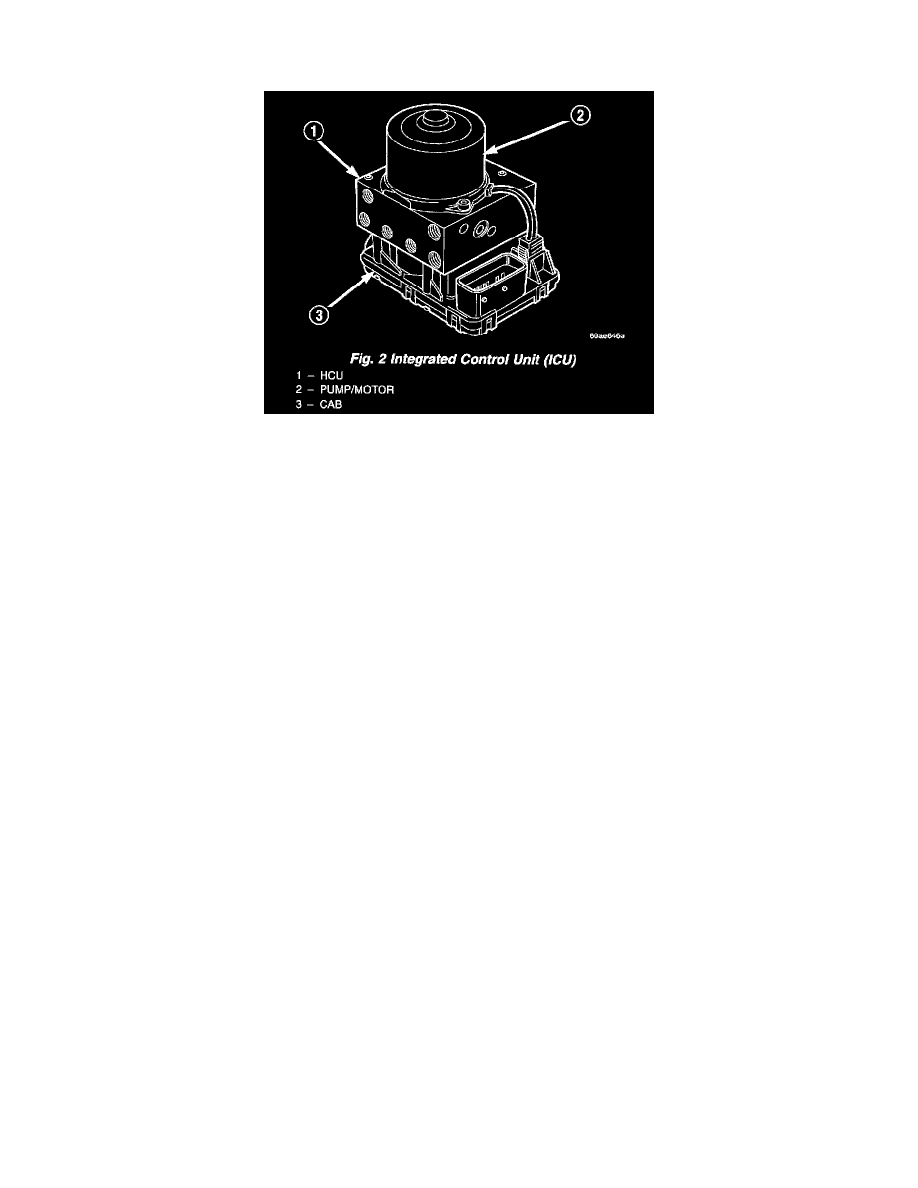Breeze L4-2.4L VIN X (2000)

Controller Antilock Brake: Description and Operation
DESCRIPTION
The Controller Antilock Brake (CAB) is a microprocessor-based device which monitors the ABS system during normal braking and controls it when
the vehicle is in an ABS stop. The CAB is mounted to the bottom of the HCU. The CAB uses a 25-way electrical connector on the vehicle wiring
harness. The power source for the CAB is through the ignition switch in the RUN or ON position. The CAB is on the CCD bus.
OPERATION
The primary functions of the CAB are to:
1. monitor the antilock brake system for proper operation.
2. detect wheel locking or wheel slipping tendencies by monitoring the speed of all four wheels of the vehicle.
3. control fluid modulation to the wheel brakes while the system is in an ABS mode.
4. store diagnostic information.
5. provide communication to the DRB scan tool while in diagnostic mode.
The CAB constantly monitors the antilock brake system for proper operation. If the CAB detects a fault, it will turn on the amber ABS warning
lamp and disable the antilock braking system. The normal base braking system will remain operational.
The CAB continuously monitors the speed of each wheel through the signals generated by the wheel speed sensors to determine if any wheel is
beginning to lock. When a wheel locking tendency is detected, the CAB actuates its solenoids. This actuation opens and closes the valves in the
HCU thereby modulating brake fluid pressure in the hydraulic circuits. The CAB continues to control pressure in individual hydraulic circuits until
a locking tendency is no longer present.
The CAB contains a self-diagnostic program that monitors the antilock brake system for system faults. When a fault is detected, the amber ABS
warning lamp is turned on and the fault Diagnostic Trouble Code (DTC) is then stored in a diagnostic program memory. These DTC's will remain
in the CAB memory even after the ignition has been turned off. The DTC's can be read and cleared from the CAB memory by a technician using
the DRB scan tool. If not cleared with a DRB scan tool, the fault occurrence and DTC will be automatically cleared from the CAB memory after
the identical fault has not been seen during the next 3,500 miles.
CONTROLLER ANTILOCK BRAKE INPUTS
^
wheel speed sensors (four)
^
stop lamp switch
^
ignition switch
^
system voltage
^
ground
^
diagnostic communication (CCD)
CONTROLLER ANTILOCK BRAKE OUTPUTS
^
amber ABS warning lamp actuation
^
instrument cluster (MIC)
^
diagnostic communication (COD)
